Digital Platforms & Tools
Publisher growth tactics for election season | WEBINAR
Publisher growth tactics for election season | WEBINAR
Home ▸ Digital Platforms & Tools ▸ 8 Best Email Newsletter Platforms for Publishers in 2024
Top Picks
Disclaimer: Our top picks are based on our editors’ independent research, analysis, and/or hands-on testing. Editorial policy
Subscribe to Pubtech Insights

Founder at SODP
Audience attention spans have fallen for decades as competition for mindshare has skyrocketed. With the average focused attention span dropping from 2.5 minutes around 20 years ago to 45 seconds by, digital publishers need help to make a lasting and personal connection with their audiences.
This struggle has meant that new ways to reach people beyond a simple website have grown in popularity. Email marketing tools, including email newsletter platforms, are one such method. They allow publishers to connect with audiences on a more personal level and then steer them back to their platform.
Newsletter tools streamline audience data gathering and storage and allow publishers to craft personalized newsletters that are more likely to engage readers. For example, audience segmentation features help identify and sort reader interests and demographics, making it easier to communicate with different groups.
Newsletters allow publishers to constantly contact their readership, providing an incredible opportunity to build audience loyalty and drive growth.
Email newsletter platforms enable their users to create custom newsletters, send them directly to subscriber inboxes, and monitor the performance of their email marketing campaigns.
These email marketing services contain easy-to-use tools — such as a drag-and-drop editor — that publishers can use to customize newsletters for their niche. Many even provide customer relationship management (CRM) software to help newsletter subscribers.
While each piece of software allows publishers to interact with audiences offsite, capabilities vary from platform to platform. For example, they may or may not provide campaign data analysis or third-party integrations.
This means publishers need to weigh their goals carefully before selecting a platform, ensuring their pick has the features they need to achieve their strategic goals.
An email newsletter platform can offer various services, including newsletter creation, distribution and scheduling. These platforms also allow for creating and managing transactional emails, which are essential for eCommerce businesses to handle customer communication and engagement.
Publishers can use these tools to create branded emails, schedule when the emails are sent to different audiences and track the performance of various campaigns.
Publishers build email lists for these campaigns by prominently placing calls to action (CTAs) on their sites, offering compelling value exchanges. For example, in exchange for an email address, a news outlet might promise to keep the audience up to date with the latest world events.
This strategy ultimately helps to boost and prolong engagement lifecycles.
Publishers should use an email newsletter platform because of its many benefits, not least of which are streamlining and tracking newsletter distribution. These platforms can support various email marketing strategies, catering to the specific needs of e-commerce, creators, small businesses, and more. Below are the four main benefits these platforms offer:
Publishers need to consider connecting with their audiences beyond the content creation phase. What do we mean?
One survey found that 55% of respondents were more interested in personalized emails (PDF download).
Email newsletter platforms can facilitate this in several ways. For example, newsletter sign-ups can be set to trigger an automated “welcome email” that addresses the subscriber by name, offers insights and promotes content similar to the page the subscriber first clicked on. Smart data features, meanwhile, can be used to customize subject lines based on customer behavior and user preferences.
Email marketing software also gives publishers more options for engaging different audience segments over the long term.
These platforms allow older material to be repurposed for new users, surfacing relevant content that might not be immediately apparent on the website. For example, publishers can set up an automated welcome email (or any subsequent newsletter, for that matter) for a new subscriber to promote previous content based on that user’s interests. Publishers can then better squeeze value from their portfolio of evergreen content.
Offering exclusive content through email newsletters also fosters deeper ties with subscribers. Meanwhile, interactive elements — such as quizzes and polls — and email series can also establish longer-term relationships with audiences.
Most platforms offer analytics solutions that help gather and interpret detailed audience reporting. Metrics such as click-through rates (CTRs) and conversion rates are essential in assisting publishers in fine-tuning their email campaigns.
This data can be used to design strong cross-promotional campaigns. For example, a news outlet looking to convert its free newsletter audience into subscribers can leverage its data to spotlight paywalled content that aligns with a particular segment’s interests.
Newsletter platforms reduce the friction content creators can face when designing and distributing their newsletters. Many platforms offer customizable templates, including free HTML email templates, to help get creators off the ground as quickly as possible.
Less time spent on design means more time for content creation, operations and even developing monetization strategies such as advertising and sponsorships.
For publishers exploring affiliate marketing opportunities, using email templates that are already converting audiences is definitely appealing.
When deciding between platforms, a few elements exist, including the various email marketing tools available. Cost might be a deciding factor for some publishers, while others will be more concerned with platforms prioritizing ease of access within their design.
It’s essential to weigh the options before deciding the best fit. Let’s look at a few in more detail:
The first thing publishers need is a clear idea of what they want from their email newsletters. Are they seeking to drive traffic to their website, promote products or encourage subscriptions?
Understanding these needs will make it easier to identify which platform’s features fit better quickly.
Given the greater financial constraints facing smaller publishers, it’s a good idea to determine whether a platform’s pricing is the right fit for scalability.
Paid plans are typically based on the number of subscribers and scale from there. What works for one publisher in the long term might be an onerous burden for another.
It is important for publishers that use various third-party platforms in their marketing strategies to choose a platform that seamlessly integrates with existing tools.
Picking a platform that can synchronize data between systems will allow for unified communication across different channels — an especially important feature for publishers aiming to build their social media presence.
As noted above, newsletter personalization significantly improves a publisher’s chances of attracting and retaining an audience. Platforms will offer different levels of customization, with some requiring the publisher to be more technically proficient when designing their newsletters.
For those looking for a relatively simple newsletter creation process, this is when a platform’s template library and customization options will become more critical. There are several platforms with the popular drag-and-drop feature, so publishers without a skilled in-house design team should look for a platform that simplifies the process.
Our ratings for the Email Newsletter Platforms are as follows for different checkpoints:
| Tool/Platform | Deliverability and Inbox Placement | Ease of Use | Customization and Design Flexibility | Automation and Segmentation | Analytics and Reporting | Integration Capabilities | Subscriber Management | A/B Testing | Mobile Optimization | Support and Customer Service | Scalability and Pricing | Compliance and Security | Collaboration and Workflow Features | Deliverability Support and Reputation Monitoring | Growth Features | Score |
|---|---|---|---|---|---|---|---|---|---|---|---|---|---|---|---|---|
| Mailchimp | 5 | 5 | 5 | 5 | 5 | 5 | 5 | 5 | 5 | 4 | 4 | 5 | 5 | 5 | 5 | 5.0 |
| Campaign Monitor | 5 | 4 | 4 | 4 | 5 | 5 | 4 | 5 | 5 | 4 | 4 | 5 | 4 | 4 | 4 | 4.5 |
| beehiiv | 4 | 5 | 3 | 5 | 3 | 3 | 4 | 4 | 5 | 4 | 5 | 4 | 3 | 3 | 5 | 4.1 |
| AWeber | 4 | 4 | 3 | 4 | 3 | 4 | 4 | 3 | 4 | 5 | 4 | 5 | 3 | 4 | 4 | 4.0 |
| Upland’s Postup | 4 | 3 | 3 | 4 | 4 | 4 | 4 | 3 | 4 | 4 | 4 | 4 | 3 | 3 | 4 | 3.8 |
| Ghost | 3 | 4 | 3 | 3 | 3 | 2 | 3 | 2 | 4 | 3 | 3 | 3 | 2 | 2 | 3 | 3.0 |
| LiveIntent | 3 | 3 | 3 | 2 | 3 | 4 | 3 | 2 | 3 | 3 | 4 | 3 | 3 | 2 | 3 | 3.0 |
| Substack | 3 | 3 | 3 | 2 | 2 | 3 | 3 | 2 | 4 | 3 | 3 | 3 | 2 | 2 | 3 | 2.9 |
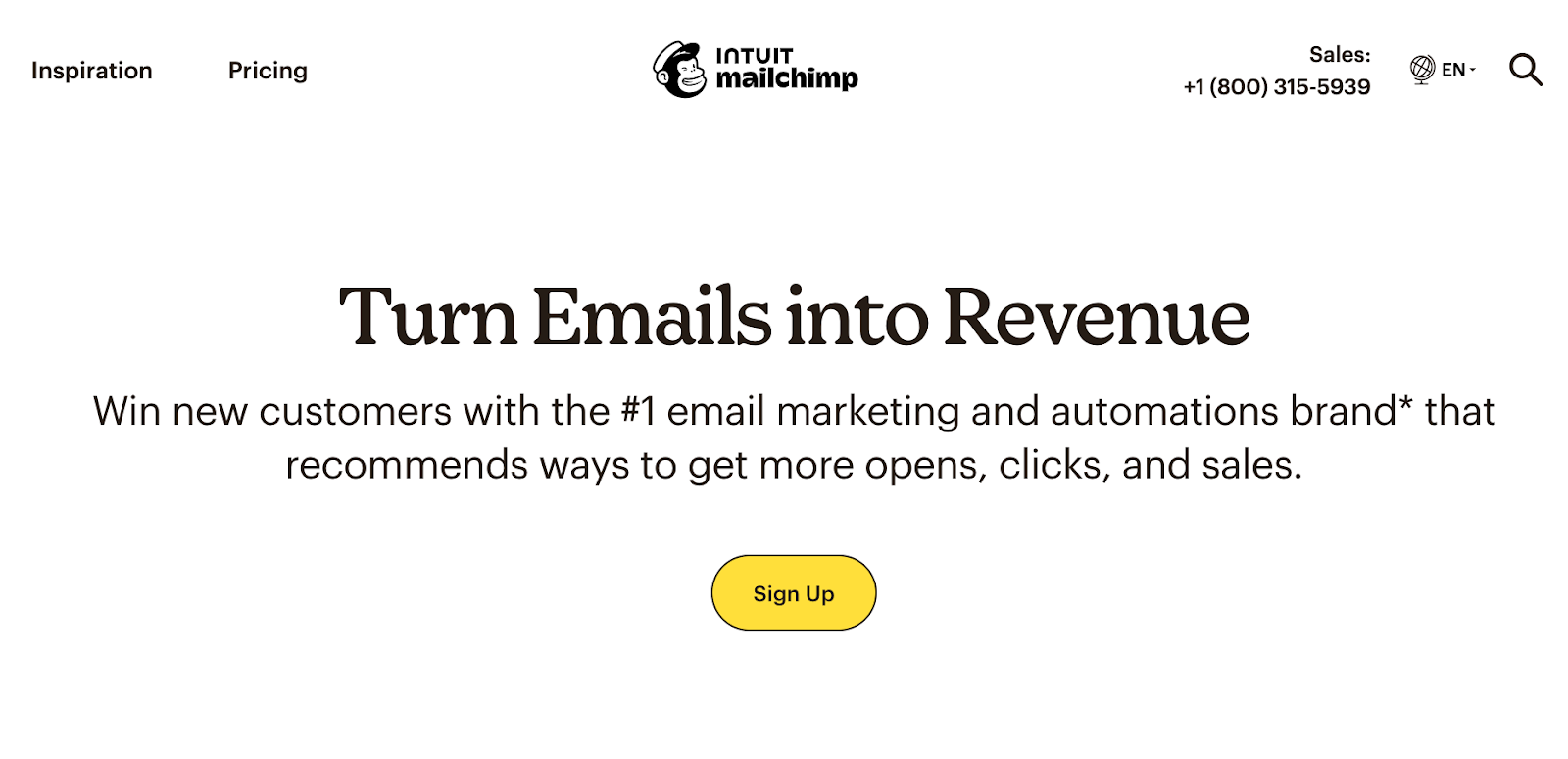
Mailchimp, acquired by software company Intuit in 2021, offers a host of key features housed within a simple-to-navigate interface.
Mailchimp pitches itself as the email newsletter platform for users of all sizes and sophistication. It offers drag-and-drop editors and developer APIs. Mailchimp also comes with an AI email creator, which can help users quickly generate and iterate on content.
Publishers can set up campaigns that target audience segments based on behavior. Moreover, campaigns can include multiple conditions to help granularize messaging. Mailchimp’s Customer Journey Builder actions can also add or remove contacts from lists.
The platform’s more than 300 third-party integrations also make it a compelling choice for publishers looking for a platform that can complement their current tech stack.
Mailchimp does have a free plan for publishers with up to 500 contacts and 1,000 emails per month, but its feature set is extremely limited.
The Essentials and Standard plans come with a 30-day free trial, after which they cost $13 and $20 per month, respectively, for 500 contacts and 5,000 and 6,000 emails. Plan prices rise as contact and email limits increase.
The Premium plan, which starts at $350 per month and is almost identical in feature set to the Standard plan, offers unlimited contacts and 150,000 email sends.
It’s important to note that Mailchimp has adopted overage charges on all of its plans, so publishers should pick their plans carefully to avoid unexpected costs.
Our rating: ★★★★★ 5.0
Features
Pros
Cons
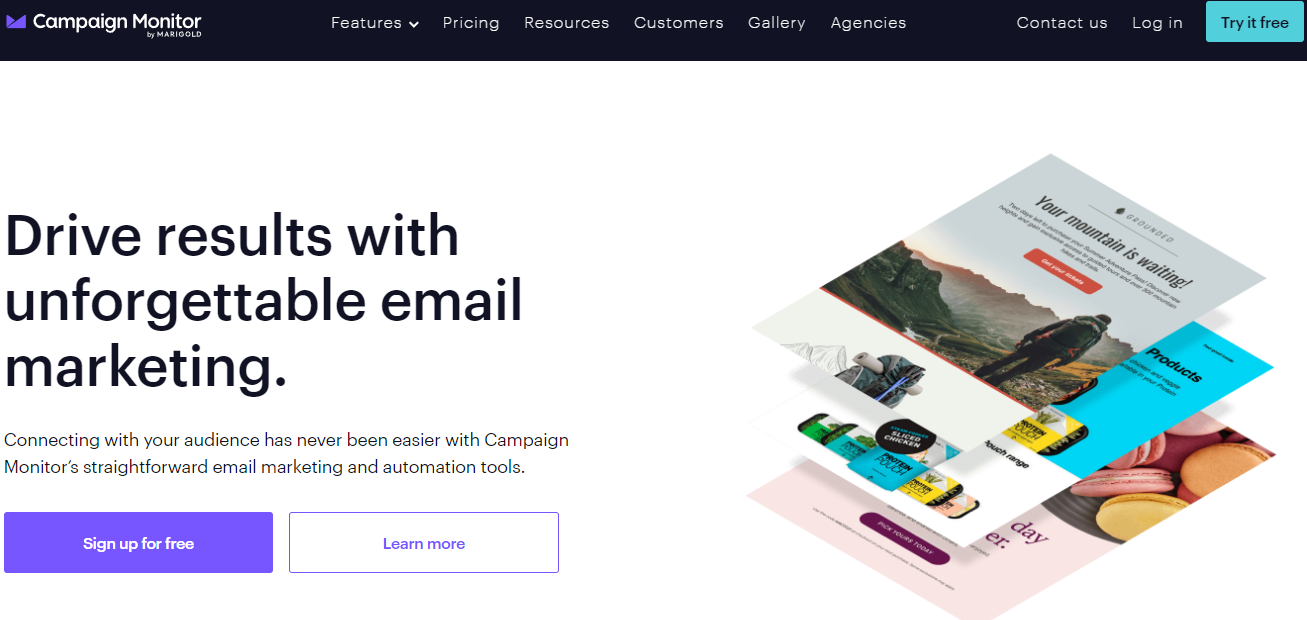
Campaign Monitor, launched in the early 2000s, is still making competitive strides in the digital landscape.
Though the landing page builder within Campaign Monitor lacks formatting options, the platform is perfect for beginner users, maintaining an easy-to-use interface that helps publishers create memorable newsletters.
The platform has more than 120 templates designed to adjust to the viewer’s device and screen size automatically. The use of responsive design woven into templates not only reduces the need for design-related resources but also means newsletters are mobile optimized from the start.
Access to free stock images eliminates the need to use personal photography or graphics, saving production budget.
The platform offers two pricing structures: contact-based and pay-per-campaign.
Pricing starts at just $9 per month for the Basic plan, scales up as subscriber counts grow and is aimed at publishers who only need to send up to 2,500 emails per month. The Unlimited plan’s starting price rises to $29 per month and offers additional features, such as unlimited emails. The Premier plan, meanwhile, includes advanced features such as send time optimization and email section locking but starts at $149 per month.
Our rating: ★★★★☆ 4.5
Features
Pros
Cons

While beehiiv is one of the newer platforms on this list, having only entered the market in 2021, it has already attracted the likes of the Boston Globe, Cult of Mac and MissExcel. beehiiv pitches itself as the most “creator-friendly” newsletter software, both a web hosting service and newsletter platform.
The platform also offers various monetization options — including affiliate programs, paid newsletters and access to ad networks — that publishers can incorporate into their marketing strategies. The software’s analytics suite can track revenue, helping to optimize future email marketing campaigns.
beehiiv’s Design Lab allows publishers to create custom landing pages focusing on optimizing conversions.
A 14-day trial allows publishers to get a feel for the platform. After that, beehiiv’s free plan offers many benefits for publishers with up to 5,000 subscribers, including web hosting and unlimited newsletter distribution. However, certain features, such as custom domains or segmentation, are restricted. Still, this makes it an ideal choice for newer publishers with constrained budgets.
The Grow plan is marketed at publishers with up to 25,000 subscribers, unlocks features such as custom domains and costs $49 per month. The Scale plan, which costs $99 per month, is for publishers with up to 200,000 subscribers and comes with advanced features such as automated journeys and beehiiv’s AI. All plans offer an annual discount.
For publishers with a higher subscriber count, beehiiv offers an Enterprise plan with negotiated pricing.
Our rating: ★★★★☆ 4.1
Features
Pros
Cons
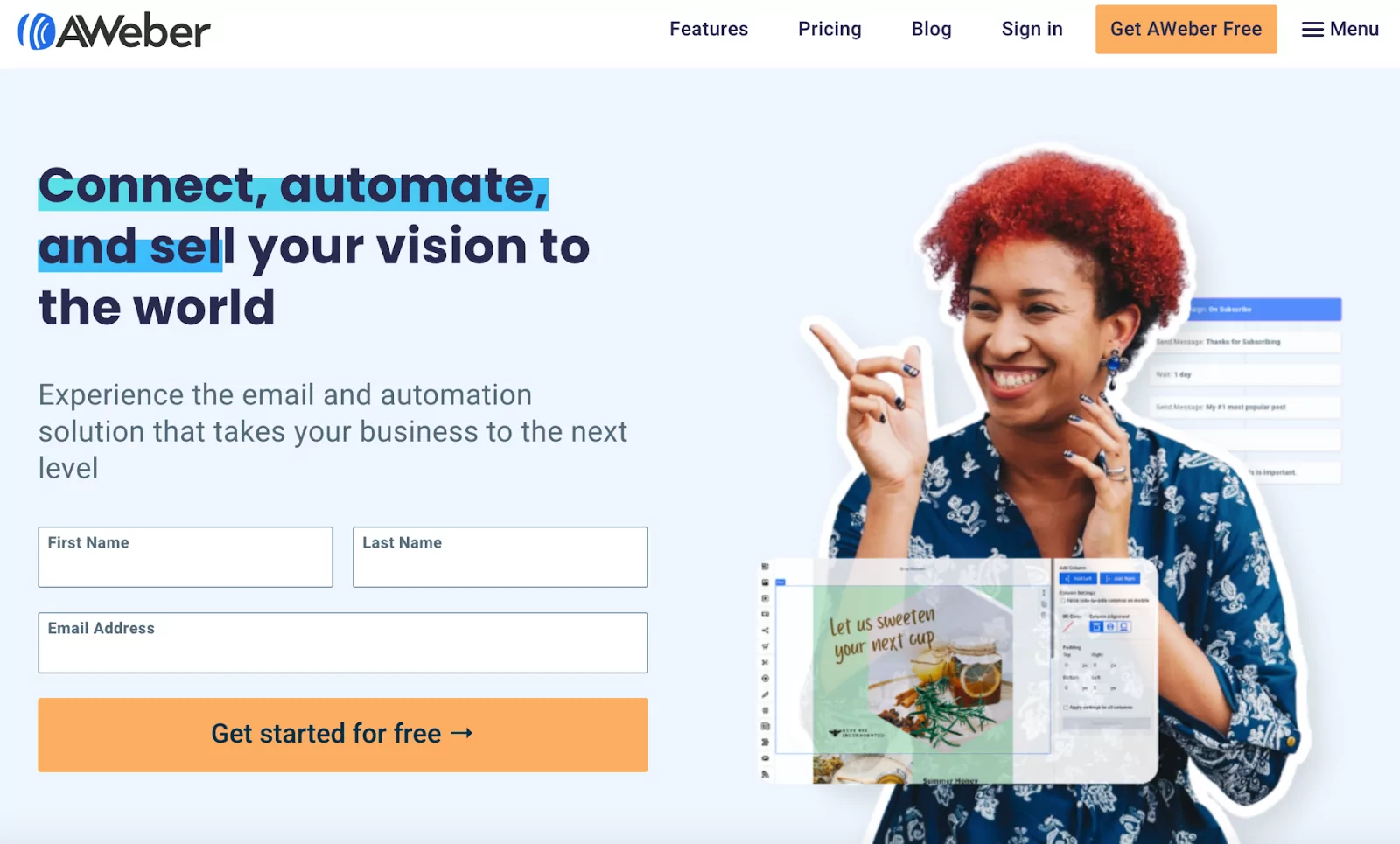
AWeber is one of the oldest platforms on this list, founded in 1998. It is used by companies such as Investopedia, WLS and Tumblr.
The platform offers publishers a range of features aimed at helping them get the most out of the platform as quickly as possible. These include a drag-and-drop email editor, autoresponders for new subscribers and audience segmentation that tracks user activity.
AWeber integrates with Canva and provides access to free stock images. Publishers can create unique and tailored email campaigns without leaving the interface, simplifying the design process.
AWeber combines systems tools with a dedicated email deliverability team to limit the number of newsletters that end up in the junk folder.
It also provides systems to help drive more traffic and downloads. One example is its customizable automated newsletter, which is created and distributed and is triggered when new content is published. This is massively helpful for outlets that publish at scale, alleviating some cross-platform distribution pressures.
AWeber offers a 30-day free trial and a free plan with a limited feature set for publishers with up to 500 subscribers. The Lite and Plus plans, which start at $14.99 and $29.99 per month, respectively, offer unlimited subscriber counts but come with additional subscriber fees. These two plans offer a discount for annual purchases.
Publishers with more than 100,000 subscribers should consider the Unlimited plan, which has a fixed monthly price of $899.99.
Our rating: ★★★★ 4.0
Features
Pros
Cons
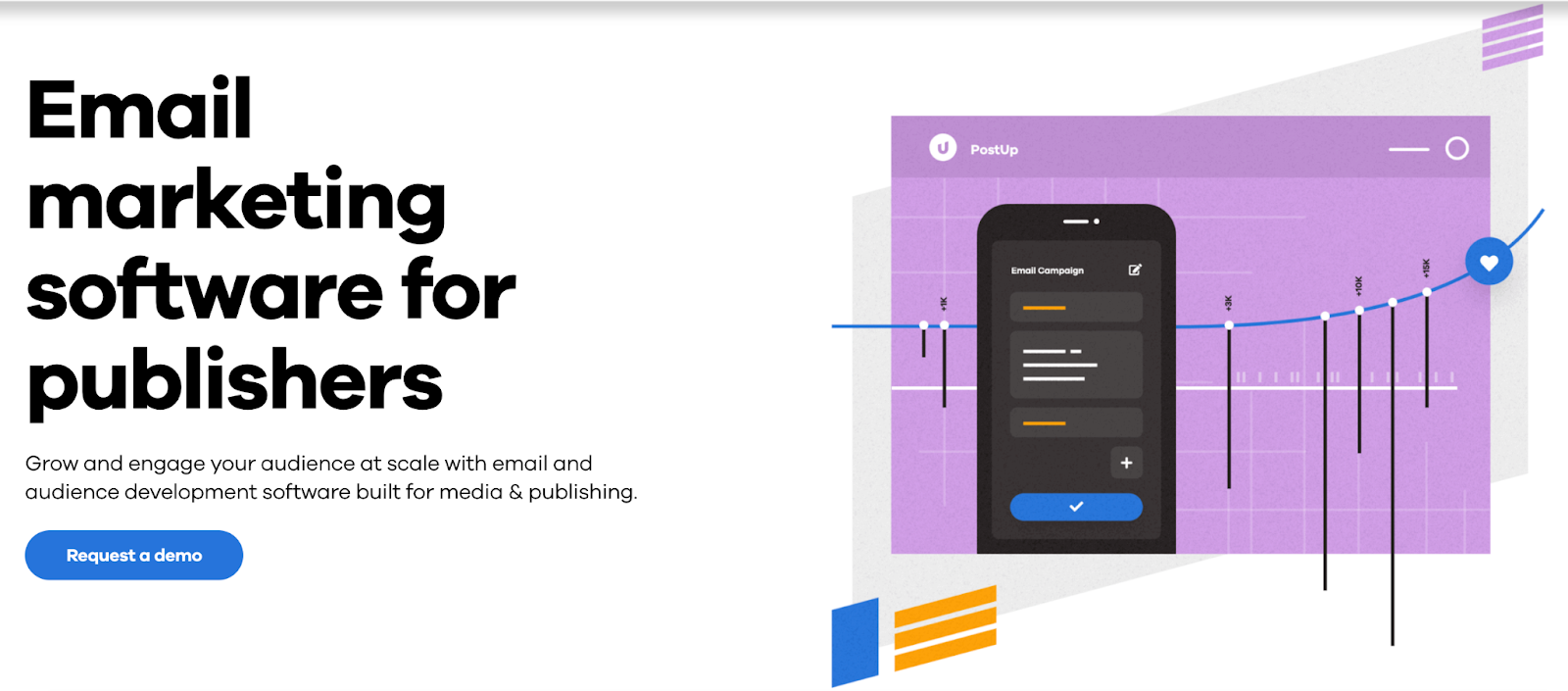
Upland’s Postup is a smaller platform offering several audience development tools designed to help companies build and maintain relationships with email subscribers.
The platform, which counts HBO and Adweek among its clients, offers data gathering and audience segmentation features that don’t disrupt the user experience (UX).
The email marketing service allows publishers to automate some or all of their email creation and distribution processes. This includes automating personalized newsletters and breaking news alerts targeting audiences based on their interests. Postup can also integrate with WordPress and other content management systems (CMSs) to populate content from within the CMS.
Postup also uses responsive design in its newsletter creation, seamlessly displaying emails whether they’re viewed on desktop or mobile.
Demos are available for publishers to try out the software; however, pricing must be discussed with Upland’s sales team based on individual use cases.
Our rating: ★★★☆ 3.8
Features
Pros
Cons
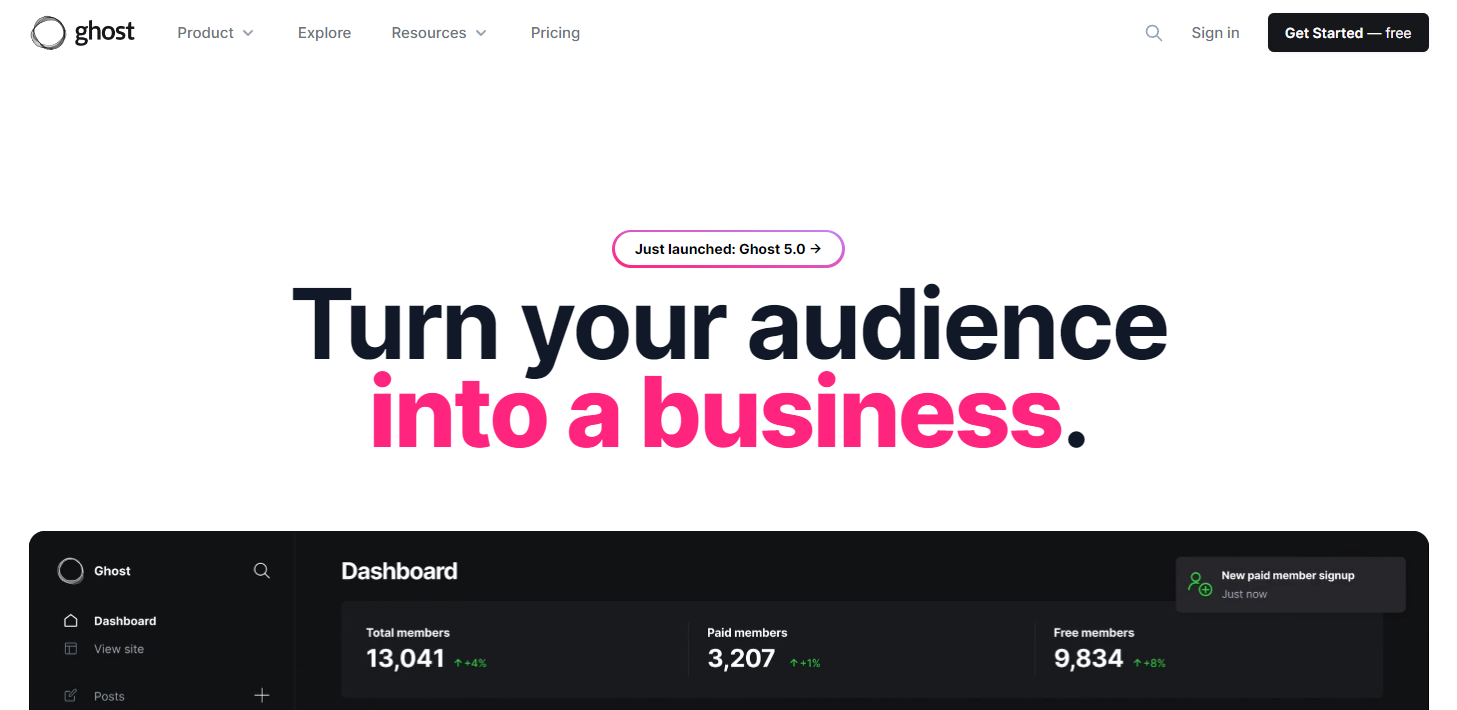
Launched in 2013, Ghost is an open-source platform intended for users to publish, share and grow a niche business. Notable users of the platform include The Atlantic, The Lever and Bklyner.
Featuring website building and publishing tools, Ghost can send personalized email newsletters and launch premium subscriptions for its users. It’s designed to make email marketing smoother and simpler for businesses of all sizes by effortlessly creating and managing email campaigns.
Ghost’s website offers hundreds of templates and many integration options. The platform’s simplicity and advanced customization were designed with publishers in mind.
The email marketing tool has an extensive network of resources — including expert guides, a help center and tips — that can assist publishers in researching and planning their own campaigns.
Not only does Ghost offer an extensive and varied array of third-party integrations — including the likes of PayPal, Slack and Instagram — but the platform also allows publishers to build their own integrations through embeds, webhooks or an API.
Ghost offers a 14-day free trial to test the platform, after which four paid plans exist.
The Starter plan starts at $11 per month for 500-2,999 subscribers. While the most cost-effective option, it only offers one newsletter and lacks custom themes and integrations. The Creator plan, which adds additional features such as three newsletters and 100MB file upload limits, is for publishers with at least 1,000 subscribers. It starts at $31 per month and scales in line with subscriber numbers.
The Team plan, which starts at $63 per month and is also available to publishers with at least 1,000 subscribers, offers additional benefits such as ten custom newsletters. Pricing also scales with subscriber count.
The most comprehensive and expensive option is the Business plan — which starts at $249 per month for 10,000 subscribers — and boasts features such as unlimited newsletters, staff users and premium tiers.
A 20% discount is available across annualized plans.
Our rating: ★★★ 3.0
Features
Pros
Cons
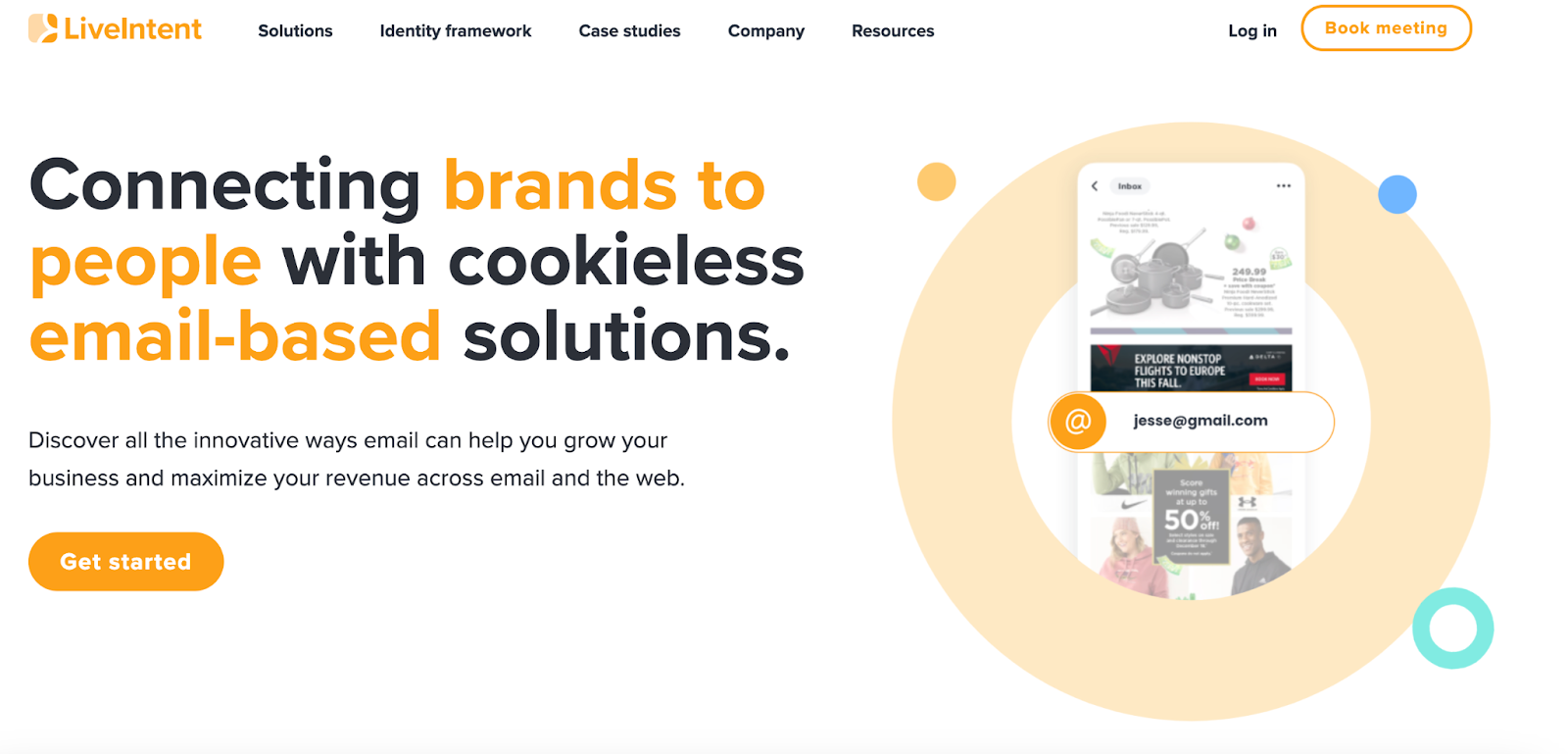
LiveIntent, one of the first platforms to offer cookie-less products, is used by Vogue, CNN and Daily Voice.
LiveIntent aims to boost newsletter revenue streams through optimization and diversification, particularly advertising. It uses custom HTML code within its newsletters to allow users to manage inventory and revenue channels.
LiveIntent created the “ads in email” category. While the platform may focus on ad-based solutions, the interface prioritizes impact and avoids intrusiveness by accommodating different ad sizes and placements, ranging from standard IAB banners to tailored native ad experiences.
LiveIntent also increases the percentage of website visitors that publishers can identify without requiring them to log in. This leads to more detailed audience insight, and publishers are better able to leverage their first-party data when dealing with advertisers without compromising data or content.
The platform also offers an “Email Reactivation” solution, allowing users to re-engage previously tagged dormant subscribers. To do this, LiveIntent uses proprietary identity graphs combined with data science to score email lists and clean up subscriber data.
LiveIntent, however, is another platform that doesn’t provide pricing information on its website.
Our rating: ★★★ 3.0
Features
Pros
Cons
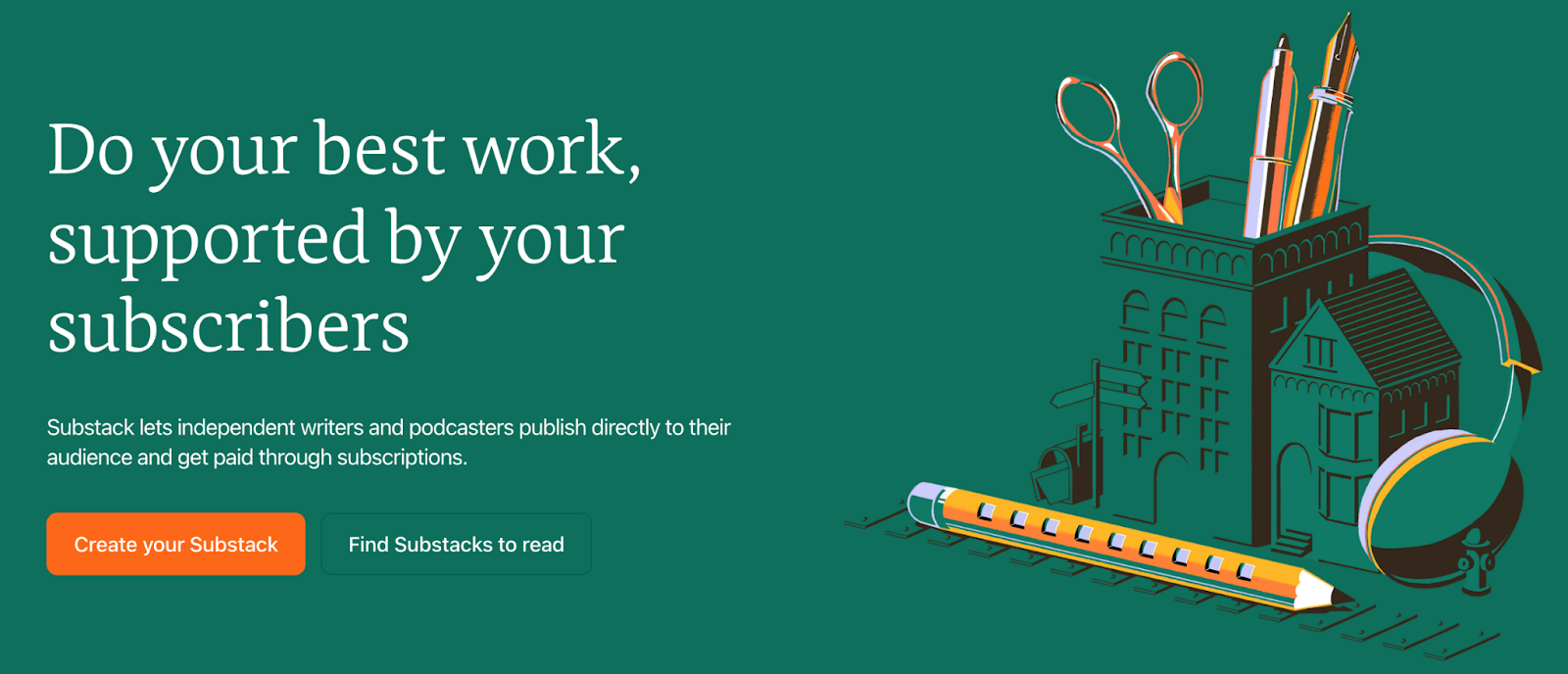
Substack has quickly become one of the most used platforms by publishers since its launch in 2017. The platform offers publishers the chance to grow a free or subscription-based newsletter.
Substack helps content creators build communities, making it extremely popular with new and established publishers.
While Substack wasn’t specifically designed for publishers, it’s a versatile email marketing platform for companies of all sizes and goals. Publishers can quickly write and publish their content or put it behind a paywall to monetize it.
However, publishers looking to grow an online audience at a broader scale could benefit from more features, such as limited SEO tools and embed options.
Publishing is free using Substack, though the platform does take a 10% cut of revenue generated through paid subscriptions.
Our rating: ★★☆ 2.9
Features
Pros
Cons
Since their conception roughly 20 years ago, email newsletter platforms have revolutionized how publishers connect with their audiences. The array of benefits these platforms offer makes them a powerful tool for any publisher looking to create a genuine bond with a target audience.
Publishers should, however, be careful to review what each can offer them. Creating engaging emails is just the first step on the road to success. Getting there will require access to advanced marketing tools to understand whether a particular marketing strategy is working out.
That said, customization, segmentation, personalization and reporting features are essential when choosing a platform. While these features are standard, only some plans contain all the features. That makes it vital that publishers don’t simply opt for the cheapest plan available but also consider their long-term growth strategy.
Whether a seasoned publisher or a new entrant, it’s important to understand the value of being able to send personalized newsletters directly to users. The best newsletter platforms allow media companies to build relationships with their audiences and stand out in an increasingly crowded market.
Related Posts